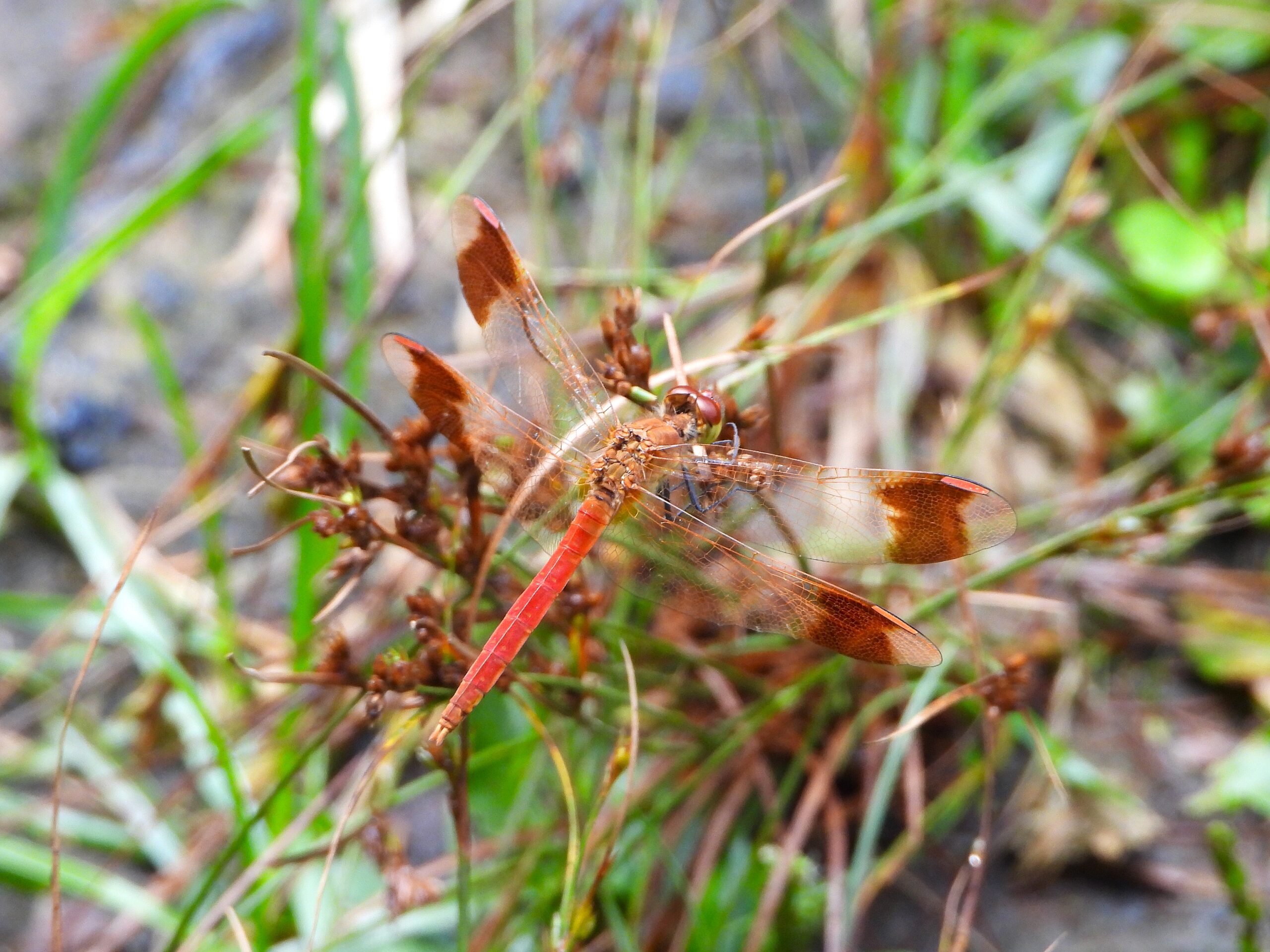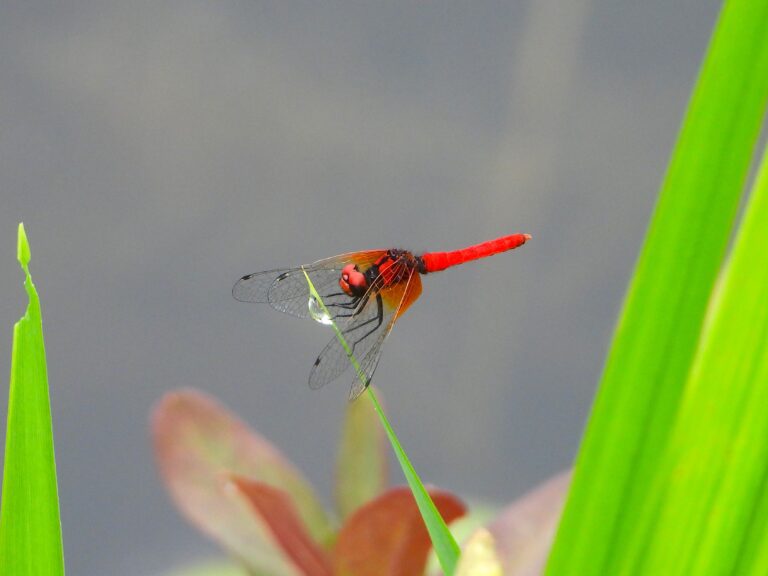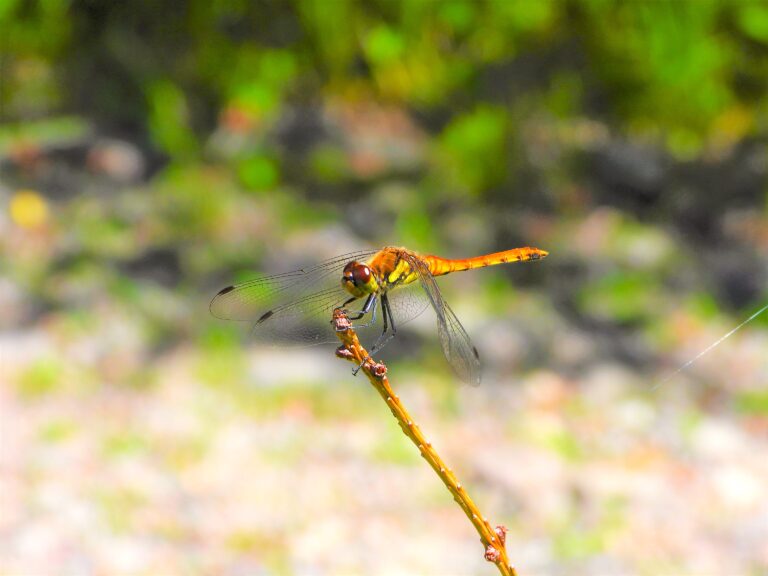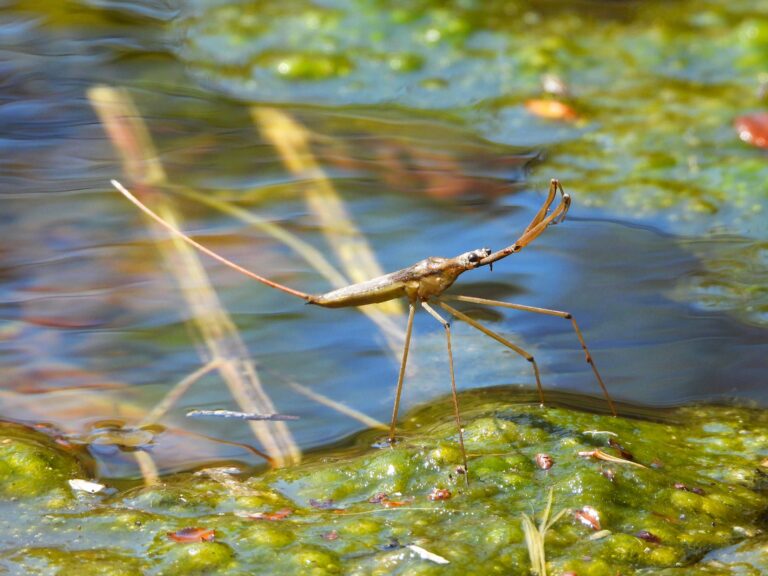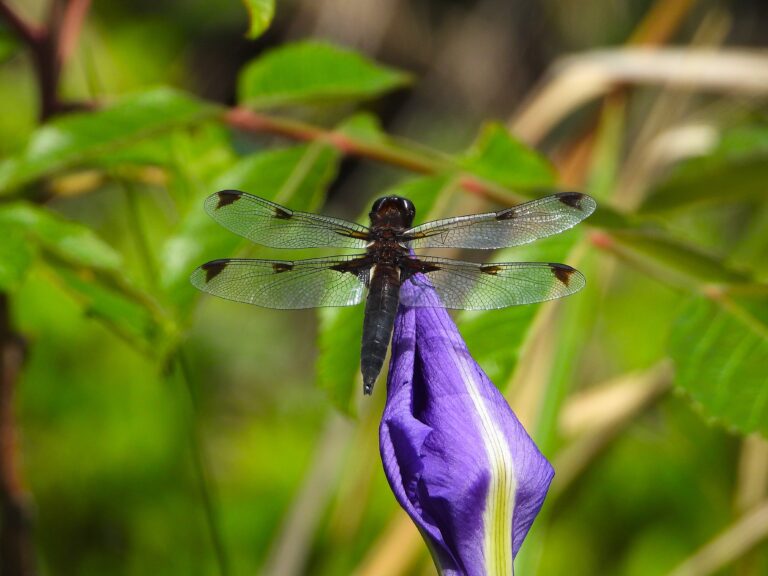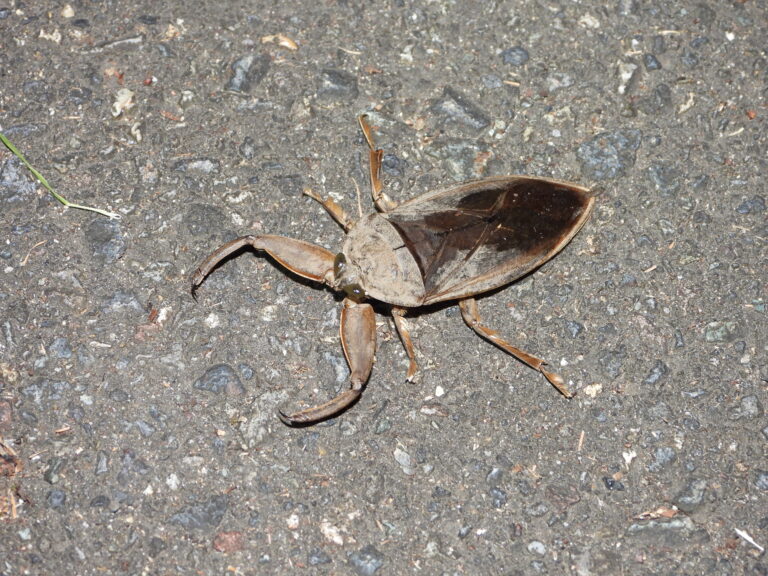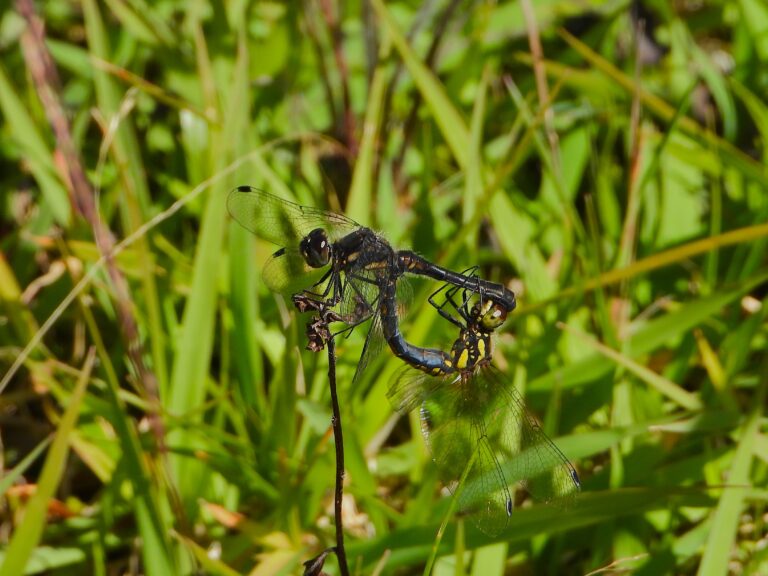Banded Darter (Sympetrum pedemontanum elatum) – Wildlife of Japan
Introduction
This striking darter is easily identified by the broad brown bands across all four wings. Mature males turn bright red as the season progresses. It is widely distributed across Hokkaidō, Honshū, Shikoku, and Kyūshū.
Appearance
A small darter about 30–41 mm long. Each wing has a bold dark band. Mature males show reddish veins and pterostigma, while females are yellow-brown with pale pterostigma. These marks make identification straightforward in the field.
Habitat & Distribution
It inhabits slow-flowing streams, irrigation canals, and rice-field edges rather than still ponds. Larvae are often found in shallow riverside pools (wando) connected to the main channel. Distribution covers Hokkaidō to Kyūshū.
Behavior
Adults appear from late June to early July, flying until November or early December depending on region. They perch on low, flat grass along sunny banks and rarely move far from their breeding site.
Diet
Adults feed on small flying insects captured in flight over grassy or open areas.
Reproduction & Life Cycle
Mating pairs remain in tandem and lay eggs by tapping the water surface or wet mud. Eggs overwinter and hatch in spring. Larvae develop in shallow pools, and adults emerge in early summer.
Conservation
Globally listed as Least Concern (LC), but regional populations in Japan are declining. Prefectural Red Lists include: Tokyo (VU–EN), Chiba (X), Fukuoka (NT), Saga (NT). Main threats are loss of paddy-field canals and riverside pools. Maintaining earthen channels, gentle flows, and short grass zones is vital for conservation.
Similar Species
Saddled Darter (Sympetrum infuscatum) has only small dark marks near the wing tips, not the wide diagonal bands of the Banded Darter.
Author’s Impression
On late-summer afternoons, the brown bands shimmer like stained glass. Among the “aka-tombo,” this is one of the easiest to recognize.

